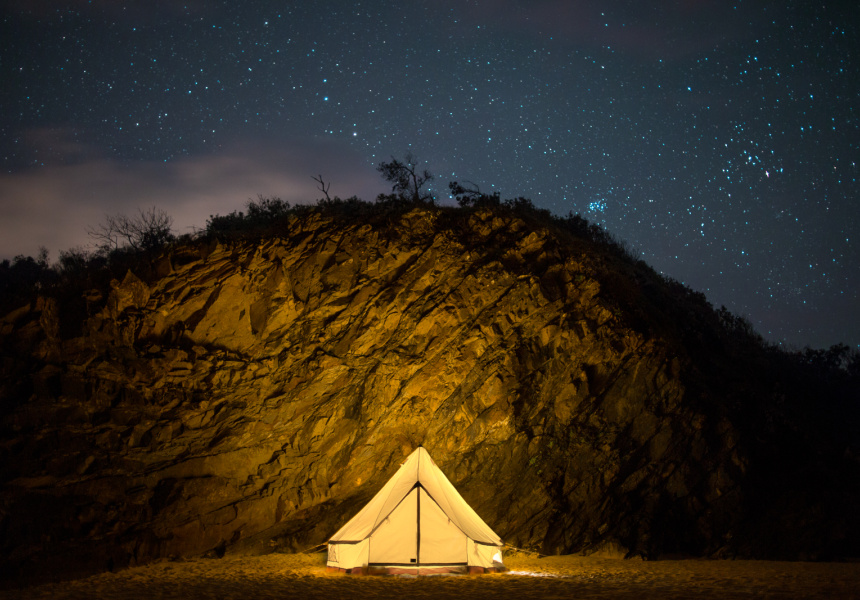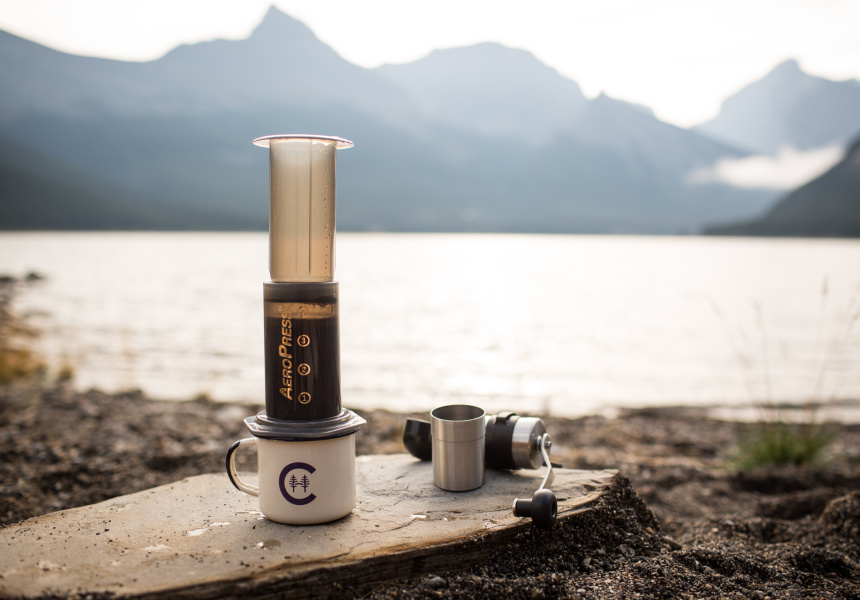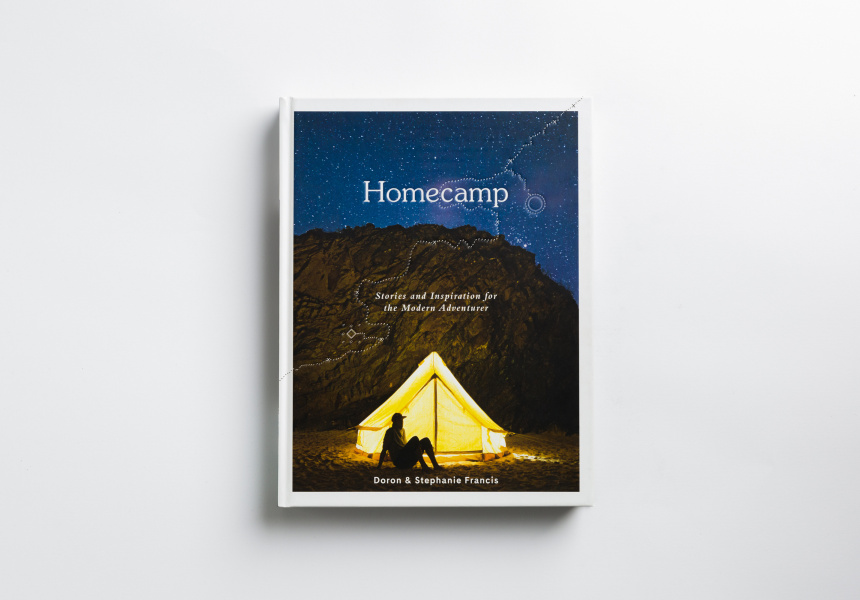Getting away from it all by spending time in nature is nothing new. But over the past few years more and more initiatives dedicated to making it accessible have popped up; the desire to unplug has become more pronounced the more connected we become.
The idea behind Homecamp was to break down the barrier between the comforts of city living and nature with luxe, high-quality camping gear and other products that help people get outdoors. Husband and wife Doron and Stephanie Francis launched their online store in 2014 with a complementary blog – now a fully fledged website – combining inspiration with instruction. The idea was to empower people who were not regular campers to start their own adventures – even if just for a weekend.
Their new book, also called Homecamp (Hardie Grant Books), features the stunning photography and galvanising content for which the site has become known. It includes profiles on intrepid travellers who have visited places such as Russia, California and lesser-known pockets of rural Australia, and practical pieces on tent-styling tips and lighting a fire.
Never miss a moment. Make sure you're subscribed to our newsletter today.
SUBSCRIBE NOWWe caught up with Stephanie Francis to talk disconnection, discovery, and the nature-driven philosophy of Homecamp.
Broadsheet: How did Homecamp begin?
Stephanie Francis: Doron and I owned a bell tent for a couple of years that we’d bought from a British brand. We’d take it out camping and to festivals and, whenever we did, we’d get so many comments about it. We loved that style of tent, and it sparked this idea of creating one of our own – one that was meant for Australian conditions. From there it grew into an idea for a business that was not just about tents but all about getting into the outdoors with really high-quality, well-designed products.
Obviously we sell products, but … we always wanted there to be a lot of beautiful content and stories around getting into the outdoors. We wanted our blog to be a combination of information and instruction.
BS: Homecamp is probably best known for its camping gear, but you also have an events arm. What kinds of experiences do you offer?
SF: Undersky is kind of its own beast. We set up the luxury camping for weddings, retreats, and larger teepees for big events, and we sometimes do little pop-up hotels. For instance, we did one earlier this year in the Grampians … We like to think the events will inspire people to become Homecamp customers, but [Undersky] is more upper-end. It’s for people who want to enjoy that camping experience but don’t want to set it up themselves, whereas our Homecamp philosophy is, “Here’s the gear, now you can go out and do it for yourself.”
BS: Homecamp is about three years old now – has it changed much over the years?
SF: The core philosophy remains, but we’ve definitely expanded our product range… The tent is still the hero, but now we’ve also got gardening and more lifestyle-driven products … We’re strongly considering a more permanent set-up somewhere.
BS: What do you think is making people more receptive to this idea of small living and escape?
SF: We’re so attached to our devices, so there’s that longing and yearning – and it’s an innate human need – to get back to nature. It’s a stronger pull now because our lives have become so busy and so connected … Paradoxically, I think the internet has also helped. There’s all of this beautiful photography and this amazing content that people are finding online, and it’s opening up a whole new world. Back in the old days, if you found a brochure of a national park, it wouldn’t really sell the dream in the same way.
BS: What’s inside the Homecamp book?
SF: Some of it is adventure-style stories, where someone’s decided to pack up all their gear, get on a bike and ride around Australia – those quite bold adventures that are super inspiring and interesting. But we also wanted there to be stories that were less about conquering and more about connection. There are some really beautiful, reflective pieces – for instance, one woman wrote about the yearly bonfire she puts on with her friends. There’s also a thoughtful piece about the joys of stargazing … At the end of the book we have a little
how-to section, which comes back to encouraging people and giving them tips on how to pack for a camp, and start a fire, and help them get out there to do it for themselves.
BS: There’s a really strong thread of environmentalism and sustainable travel running through the book. Do you think more people are becoming aware of the importance of reducing their impact?
SF: I think so. Well, I hope so… Travel isn’t so expensive anymore. People can get on a plane and off they go. But the impact of that is pretty huge ... Even on local camping trips, it’s so important to be aware not to leave a trace behind. That’s why Homecamp is so big for us – that’s why we bang on so much about quality and building things to last. Through our events arm especially we see the aftermath of things like festivals, and it’s not pretty. So much gear is made to be used just once and then disposed of, and people just leave it there. That’s a really big concern, and that’s why we try to get people to invest – within their means, of course – in things that will last and not just end up in landfill after one use.
To celebrate Homecamp’s new book, Broadsheet and Homecamp are giving away one of Homecamp's beautiful bell tents, an Aeropress, two enamel mugs and a copy of Homecamp – exactly what you need to get your summer adventures started. All you need to do is sign up to our newsletter in the entry form below. The competition runs from December 18 to January 8, 2018. The winner will be drawn on January 8.



